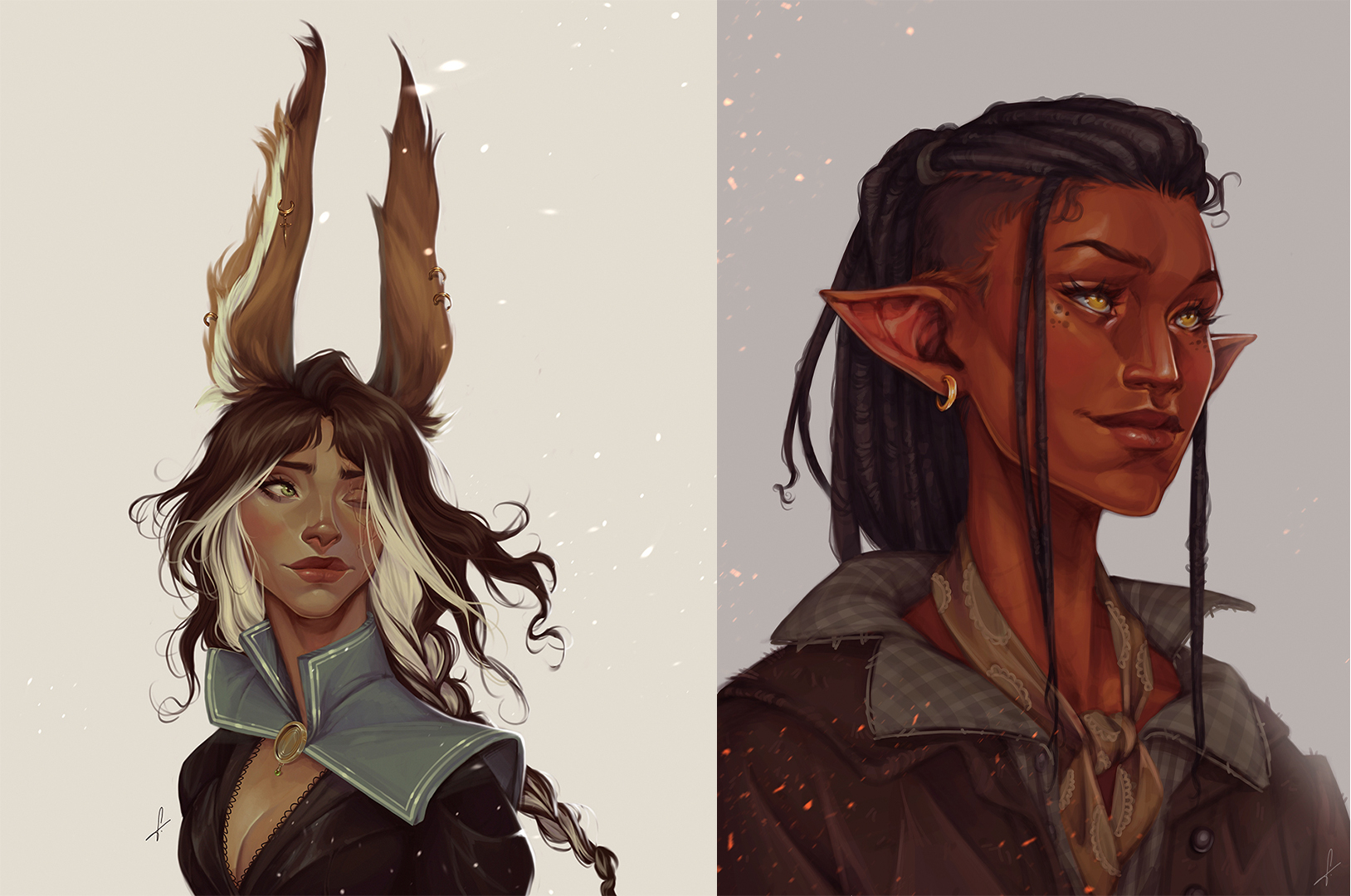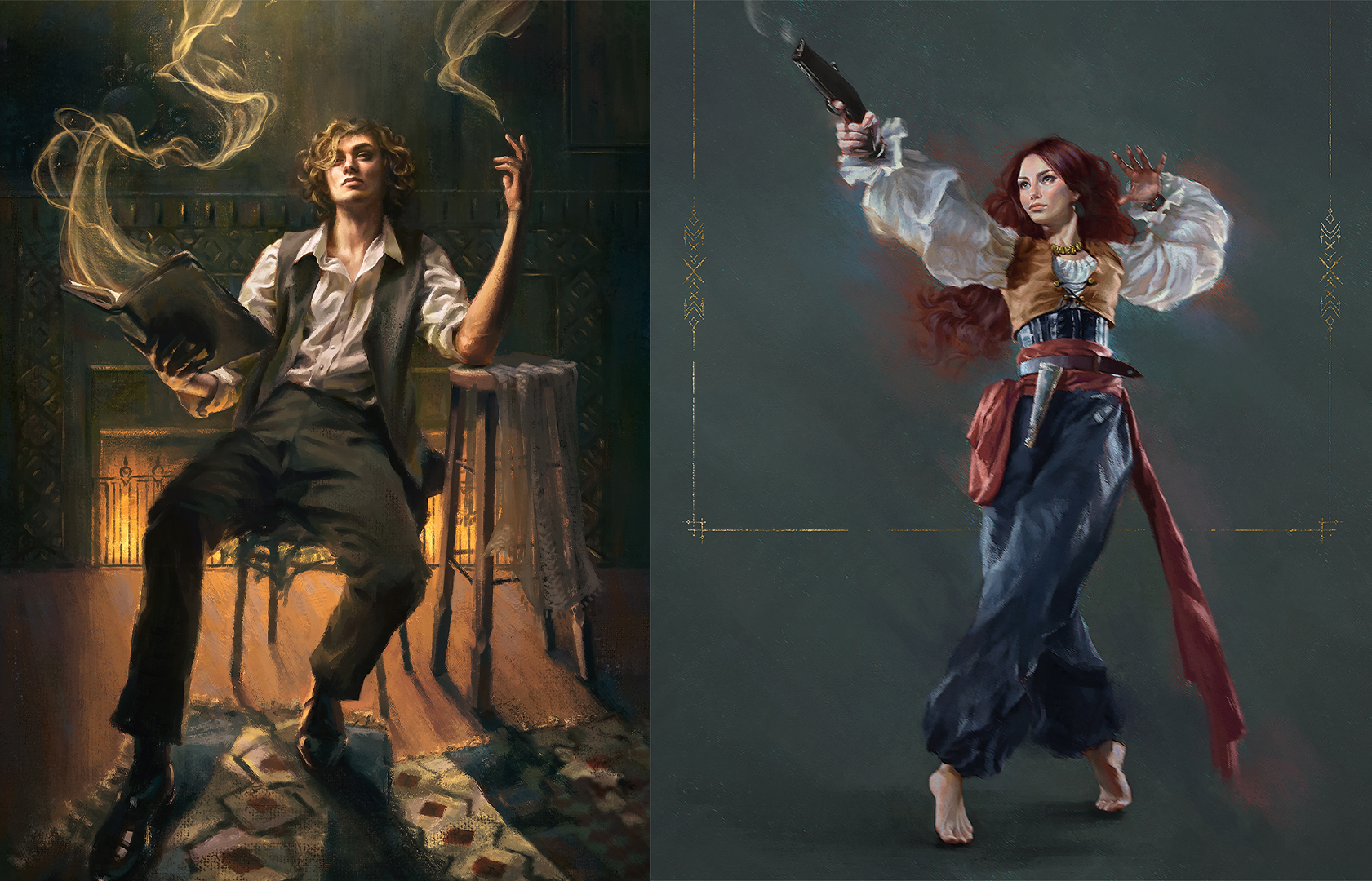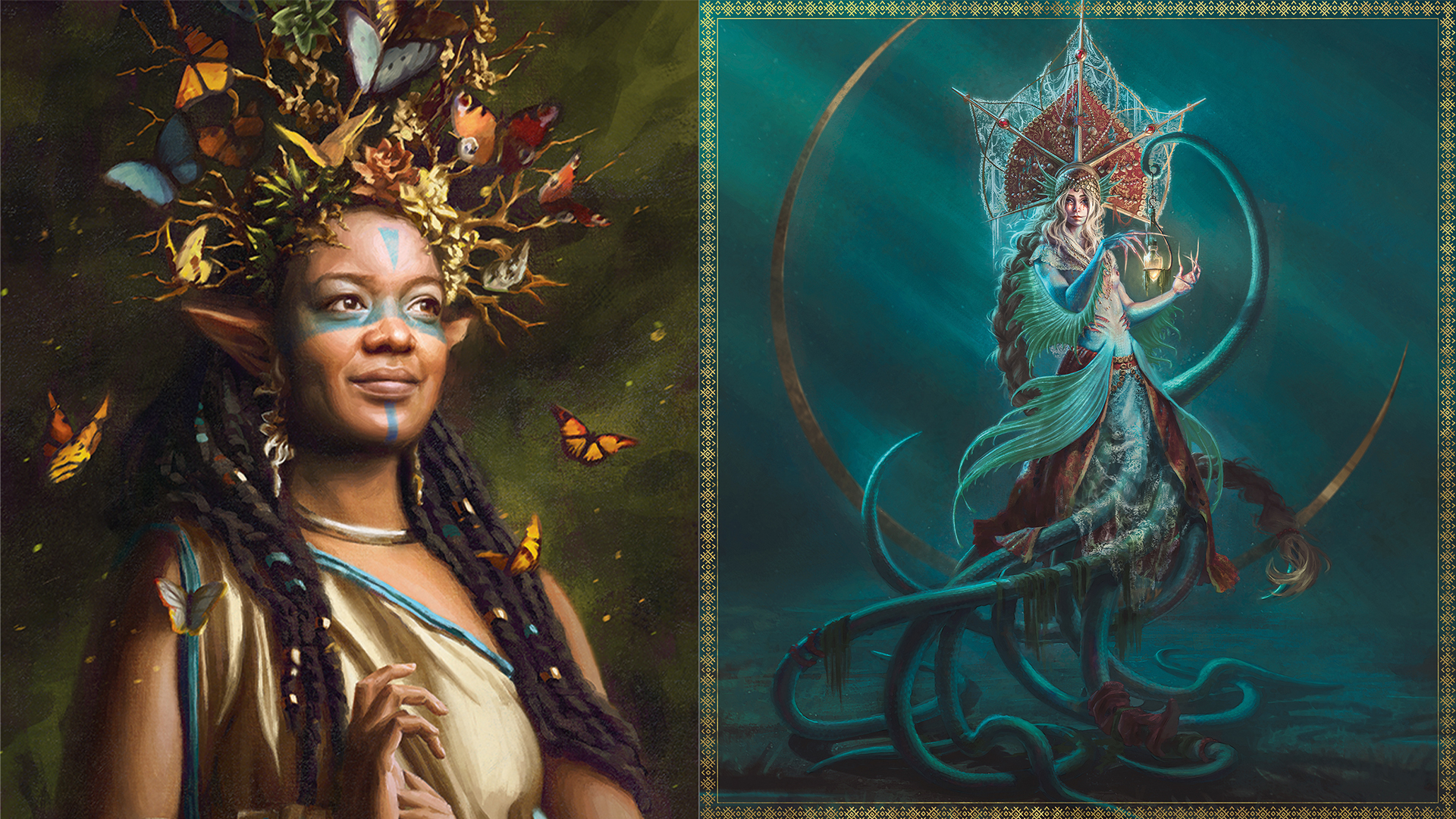
The digital art world today sits at an interesting point in its history. The tools we have at our disposal are now more powerful than ever, but the ability to create overly slick and polished visuals for films and games, or to create a complex image from a text prompt, has led to a feeling that the human touch is slipping away.
People are looking for connection when they consume art, and there’s now a sense that technology might be coming between the artist and viewer. The result is a series of trends that are reinforcing the human connectedness that people get from art, and rejecting output that threatens it.

One example is the film industry’s move towards 2.5D stylised animation. Audiences are losing their appetite for perfect lighting and smoothness, so we’re starting to see a different look where 3D animation is combined with 2D illustration.
Sometimes the effect is a painterly, dreamlike cinematic with a hint of jumpy movement that harks back to storybook illustration and analogue animation techniques. Other times you’ll see a comic book aesthetic. But one way or another, this technique is being used to produce a look that evokes a sense of the hand-drawn and the human-made.
01. Seeking substance
Another movement that’s set to gain even more momentum is the backlash against the world-rocking impact of generative AI. With greater exposure, people are becoming more discerning and can see through the superficially pleasing aesthetic of AI art. They want something more substantial, as well as an industry that supports the human artists who create it.
In conjunction with all of this, social media platforms are exerting their influence on the art world by, ironically, making it harder for artists to attract and keep an engaged following. In a bid to find their tribe, we’re starting to see artists drill down into more specific and individual art styles as a way to build those stronger connections with their fans.

02. Resurgence of the niche
Fantasy character artist and illustrator Tamara Osborn talks about this last point in terms of “the growing necessity to be not only an artist but a brand”. She says that social media drives artists to be “easily palatable, marketable and profitable in an overcrowded space that does little to foster creativity and passion”. The reaction to this, she predicts, will be a resurgence of the niche, as artists and consumers of art “burrow themselves into neat little pockets based on the specific four-walled-internet-bedroom they have curated for themselves”.
Tamara is anticipating an increase in the creation of fan art as a way of building niche communities. “With the rising popularity of animated series like Legend of Vox Machina, Blue Eye Samurai and Arcane, and RPG video games such as Baldur’s Gate 3, Hades and The Legend of Zelda: Tears of the Kingdom, it’s becoming easier for artists to find viewers who relate and seek out the kind of artwork they’re creating,” she says. “Creating media-related artwork feels like a vital tool in online growth.”
Artists posting demonstrations of their workflow is another trend that Tamara has her eye on. “I believe we’ll see far more behind-the-scenes content cropping up on our screens,” she tells us. “As artists fight against generative AI, they are going to start showcasing more sketch, concept and process work as a means to say, ‘Hey, look, I made this! Me, a human.’”

03. Dreams joins the scene
While generative AI and social media algorithms work to make artists’ lives more difficult, there are still some new technologies that are aiming to bring enrichment. Procreate Dreams is a case in point: an affordable, accessible and powerful animation app that has been received with much delight by the digital art community.
Tamara believes we’ll see a surge of creativity that feeds into the prevailing demand for less polished and more personal work because of Dreams: “With this new software, I believe we’re going to see a huge wave of clunky and awkward but beautiful and human-made 2D animation, and that’s going to bring along with it a wave of nostalgia into digital art.”
As artists fight against generative AI, they are going to start showcasing more sketch, concept and process work
Tamara Osborn
Accessible art resources are a good thing, although their availability has made the industry more competitive. “Learning digital painting has become easier thanks to the wealth of courses and information available, as well as the affordability of quality graphic tablets,” says illustrator Nia Kovalevski. “As a result, there are many more skilled artists in the industry compared to a few years ago. So it’s becoming more important to differentiate oneself and attract an audience that appreciates and seeks out your work.”
In seeking to stand out, artists should ensure that their way of doing so aligns with their passions. “I firmly believe that only with passion will you be willing to devote a significant amount of time to it,” Nia adds.
She also notes that the 2.5D stylised animation trend is something that opens up opportunities for artists to explore a broader range of creative expressions. Nia says: “I’m hopeful the trend of experimenting with different art styles will advance further, as seen with Spider-Man: Across the Spider-Verse, Puss in Boots: The Last Wish, and Teenage Mutant Ninja Turtles: Mutant Mayhem. I hope that these successes will encourage studios to explore a wider range of styles, and that projects with unique visuals will receive funding, especially as there are now more affordable ways to apply various art styles to 3D animation.”

04. AI overexposure
On AI art, Nia sees a visual fatigue beginning to set in with viewers. “AI images tend to have a recognisable unhuman style, and after you’ve seen hundreds of them, it becomes easy to spot AI-generated pieces,” she says. “Viewers might become saturated as our brains crave variety and freshness, something that the current AI artwork struggles to offer. That’s why focusing on individuality and infusing greater storytelling and emotion into our art, which is difficult for AI to replicate, might be a wise approach.”
But boredom with the material is just one aspect of the pushback against AI-generated artwork. An artist working within the video games and movie industries, Geoffrey Ernault points out that recent use of AI art by creative companies has received far from a positive reaction among their fans.
It’s now becoming more important to differentiate oneself and attract an audience that appreciates your work
Geoffrey Ernault
Marvel’s decision to use AI to create the intro sequence for its show Secret Invasion received backlash on social media last summer, while Wacom and Wizards of the Coast were criticised for the AI-generated imagery in their marketing materials.
Both Wacom and Wizards of the Coast claimed to be unaware that AI had been used to create parts of the images because they were purchased from third parties. But the message from fans was loud and clear: they want these companies to support artists by rejecting AI art.

These incidents highlight the need for better information on the origins of imagery. Geoffrey says: “I’m hoping to see more legislation towards AI so that models are trained on controlled and traceable data, and we have a way of knowing whether something is AI-generated or not.”
He continues: “I do think there’s a world in the future where we can use artificial intelligence in tandem with digital artwork and elevate what everybody does. However, I don’t believe that stealing people’s work by basically doing the equivalent of a Google search into a $10 monthly Discord bot is the way to do that.”
Nevertheless, Geoffrey isn’t fearful of the future, as he believes that the creativity, understanding of core art fundamentals, and problem-solving abilities of human artists will always be needed. “All this strangely, in a way, has me excited, as I believe we’ll see people go back to the drawing board and focus more on things like art style, story and user experience.”
This content originally appeared in ImagineFX magazine, the world's leading digital art and fantasy art magazine. ImagineFX is on sale in the UK, Europe, United States, Canada, Australia and more. Limited numbers of ImagineFX print editions are available for delivery from our online store (the shipping costs are included in all prices).







